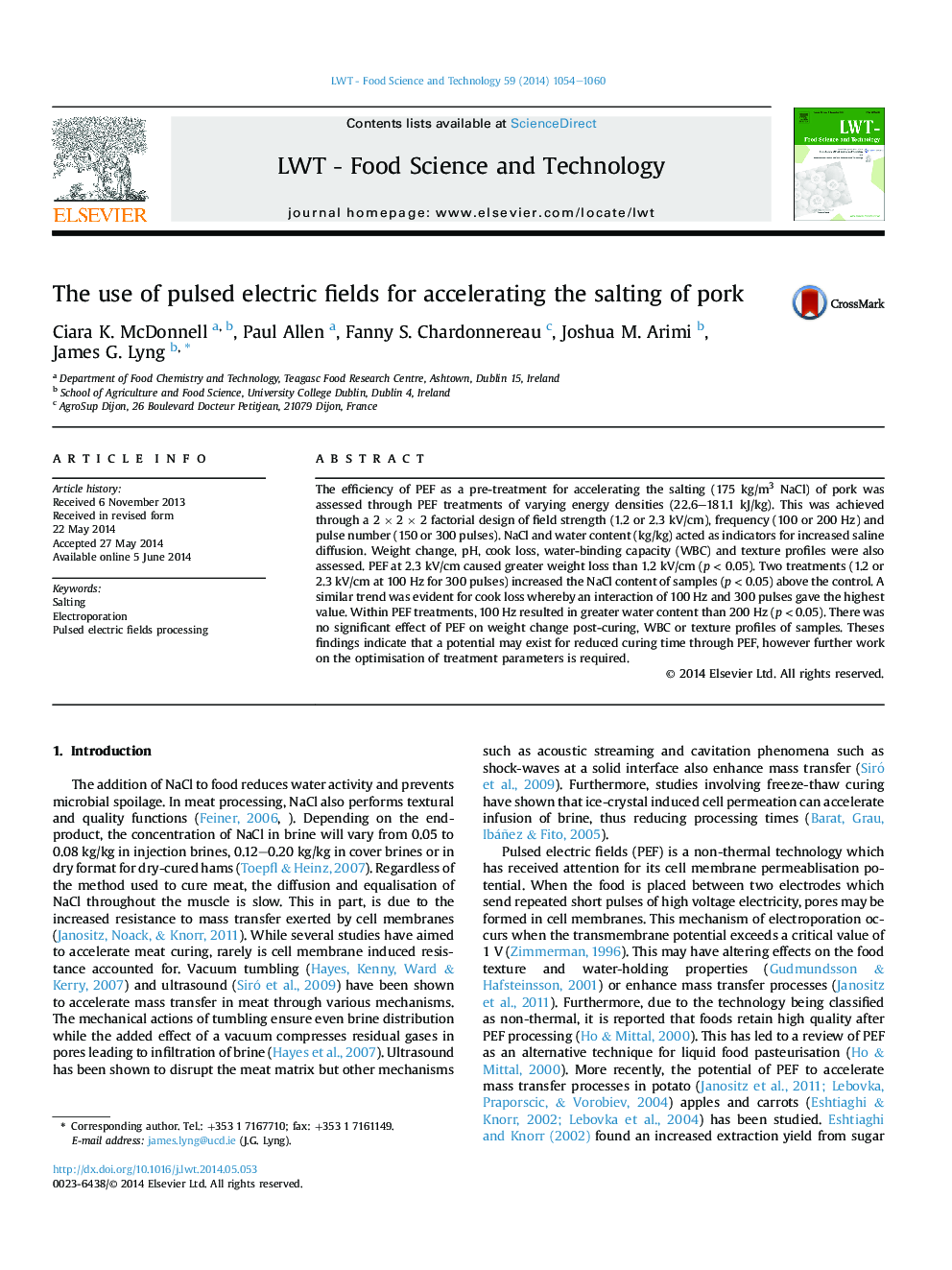| Article ID | Journal | Published Year | Pages | File Type |
|---|---|---|---|---|
| 6402681 | LWT - Food Science and Technology | 2014 | 7 Pages |
â¢NaCl uptake by meat was increased 13% above the control by pulsed electric fields.â¢A combination of lower frequency (100 Hz) and higher pulse number (300) was optimum.â¢Pulsed electric fields had minimal effect on meat quality.
The efficiency of PEF as a pre-treatment for accelerating the salting (175 kg/m3 NaCl) of pork was assessed through PEF treatments of varying energy densities (22.6-181.1 kJ/kg). This was achieved through a 2 Ã 2 Ã 2 factorial design of field strength (1.2 or 2.3 kV/cm), frequency (100 or 200 Hz) and pulse number (150 or 300 pulses). NaCl and water content (kg/kg) acted as indicators for increased saline diffusion. Weight change, pH, cook loss, water-binding capacity (WBC) and texture profiles were also assessed. PEF at 2.3 kV/cm caused greater weight loss than 1.2 kV/cm (p < 0.05). Two treatments (1.2 or 2.3 kV/cm at 100 Hz for 300 pulses) increased the NaCl content of samples (p < 0.05) above the control. A similar trend was evident for cook loss whereby an interaction of 100 Hz and 300 pulses gave the highest value. Within PEF treatments, 100 Hz resulted in greater water content than 200 Hz (p < 0.05). There was no significant effect of PEF on weight change post-curing, WBC or texture profiles of samples. Theses findings indicate that a potential may exist for reduced curing time through PEF, however further work on the optimisation of treatment parameters is required.
